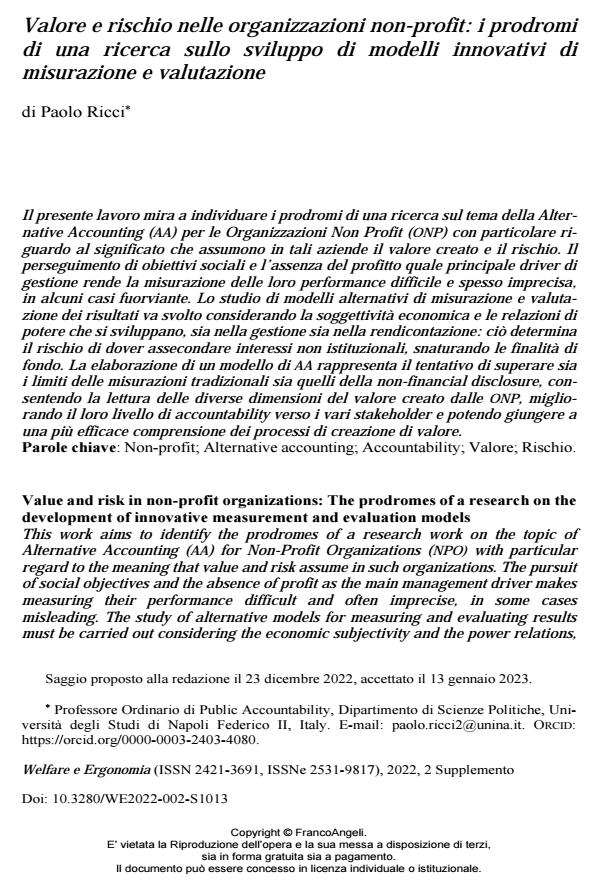Value and risk in non-profit organizations: The prodromes of a research on the development of innovative measurement and evaluation models
Journal title WELFARE E ERGONOMIA
Author/s Paolo Ricci
Publishing Year 2023 Issue 2022/2 Suppl.
Language Italian Pages 15 P. 133-147 File size 399 KB
DOI 10.3280/WE2022-002-S1013
DOI is like a bar code for intellectual property: to have more infomation
click here
Below, you can see the article first page
If you want to buy this article in PDF format, you can do it, following the instructions to buy download credits

FrancoAngeli is member of Publishers International Linking Association, Inc (PILA), a not-for-profit association which run the CrossRef service enabling links to and from online scholarly content.
This work aims to identify the prodromes of a research work on the topic of Alternative Accounting (AA) for Non-Profit Organizations (NPO) with particular regard to the meaning that value and risk assume in such organizations. The pursuit of social objectives and the absence of profit as the main management driver makes measuring their performance difficult and often imprecise, in some cases misleading. The study of alternative models for measuring and evaluating results must be carried out considering the economic subjectivity and the power relations, both in management and in reporting: this determines the risk of having to indulge non-institutional interests, distorting the underlying purposes. The elaboration of an AA model represents an attempt to overcome both the limits of traditional measurements and those of non-financial disclosure, allowing for an understanding of the different dimensions of the value created by NPOs, improving their level of accountability towards various stakeholders and being able achieve a more effective understanding of value creation processes.
Keywords: Non-profit; Alternative accounting; Accountability; Value; Risk.
Paolo Ricci, Valore e rischio nelle organizzazioni non-profit: i prodromi di una ricerca sullo sviluppo di modelli innovativi di misurazione e valutazione in "WELFARE E ERGONOMIA" 2 Suppl./2022, pp 133-147, DOI: 10.3280/WE2022-002-S1013